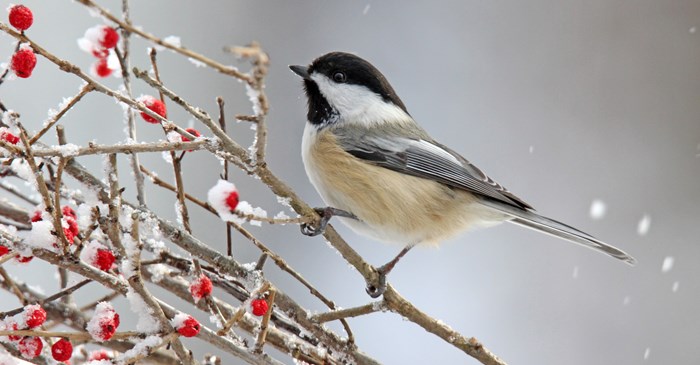Autumn has crossed over, from the fading summer state to a prelude to winter. Many insects and spiders are gone, and so are many of the green growing things, depending on where you live. That makes it all the more surprising that only half of North America's 650 bird species migrate. So what do they eat and how do they get by?
Caching out: Through the summer, especially in the waning season, several stay-for-the-winter species tuck away seeds and nuts in hiding spots. Chickadees and nuthatches will stash seeds in bark and in the crevices of trees. Crows and jays will tuck seeds and nuts into the ground. To keep other birds from finding (and devouring) their stashes, they will establish hundreds or even thousands of secret spots. They have an amazing ability to recall most of their sites!
Foraging: During the breeding season, most songbirds pair off, ready to defend their territory from rivals and intruders — both real and perceived. In the fall, these slights are forgotten as many songbirds buddy up in flocks to forage for food as a group. Some even travel in mixed flocks, especially chickadees, titmice, nuthatches and woodpeckers.
In natural areas, they may find still-clinging wild fruits, berries and seeds. They’ll also grab acorns, beechnuts and other nuts off the ground. Some flocks will search around in agricultural fields for waste grain. Others, like the Red-winged Blackbird, will probe into plants to grab dormant insects.
Bird feeders: Birds exert a lot of effort to find food this time of year, so fall and winter are absolutely the best time to supplement your neighborhood songbird’s diet and fill your feeders with energy-dense offerings.
Keep in mind, many cheaper blends contain fillers, which birds push aside to grab more worthwhile nuggets. If it’s going to waste, it’s no bargain! That’s why you’ll want to choose a high-quality blend. Lyric’s Fruit & Nut High Energy Mix is an excellent winter blend, featuring over 12 ingredients including fruit, high-energy nuts and kernels, and is guaranteed to attract a wide variety of birds. Pound for pound, it’s a great value!
